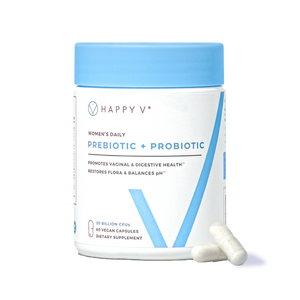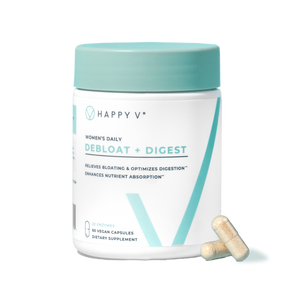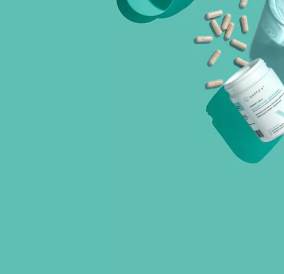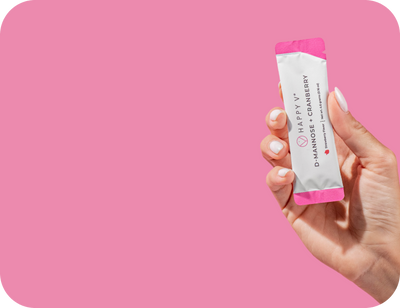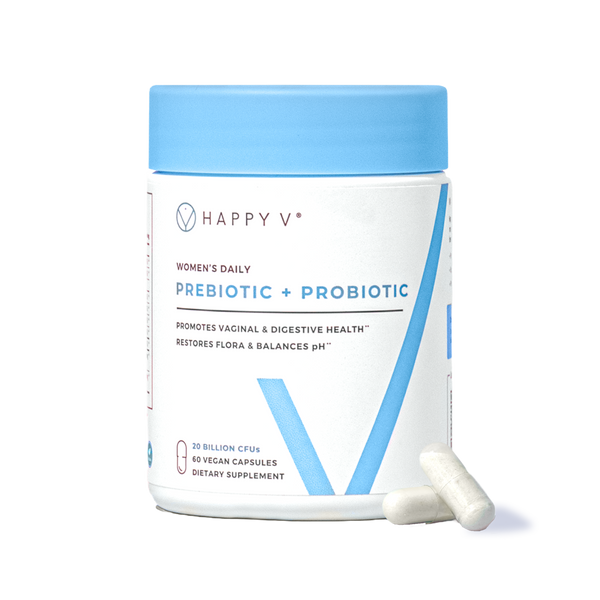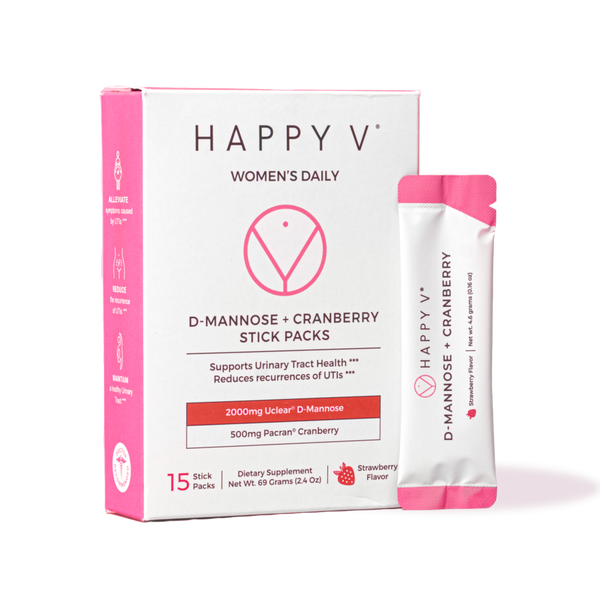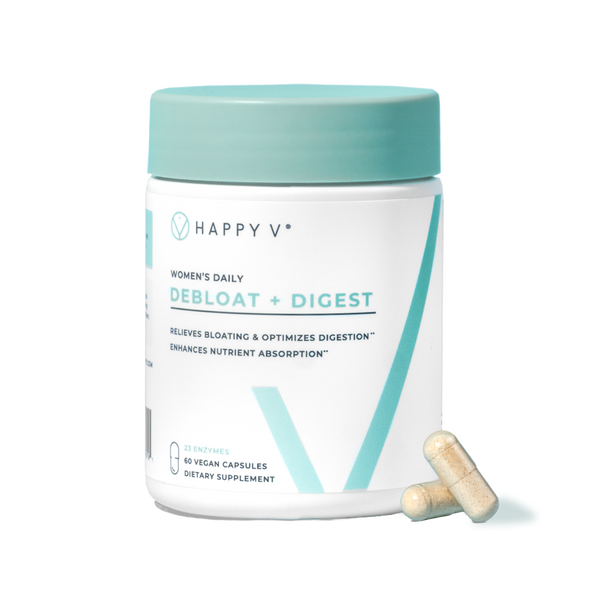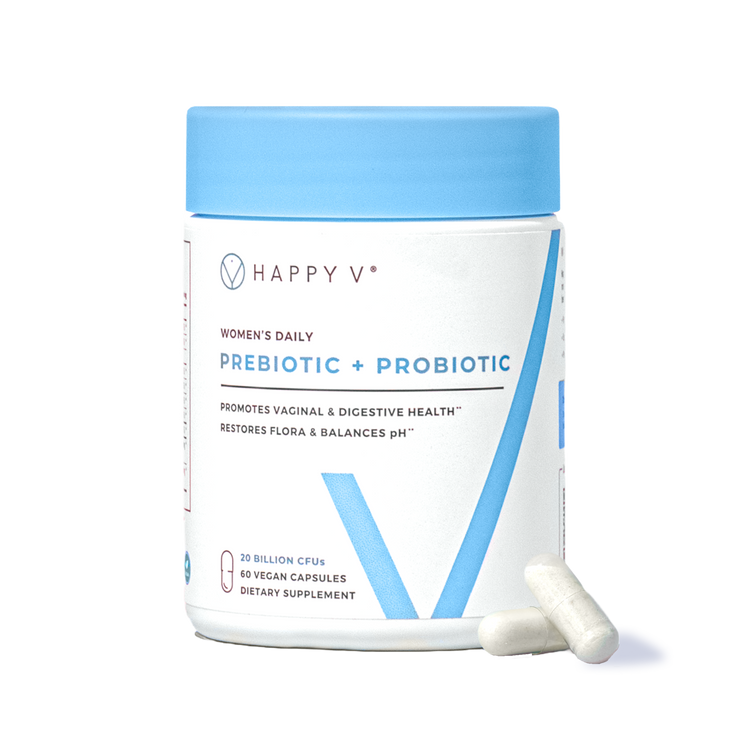- Fact Checked
- December 06, 2025
- 6 min read
How Much Water to Drink to Flush Out Yeast Infection
Table of Contents
Table of Contents
Water can do, well, just about anything! It can improve your digestion, promote weight loss efforts, and improve your skin. But can it actually help to flush infections from your body, specifically vaginal yeast infections?
That's what we're talking about today because, chances are, you have probably experienced a yeast infection at least once in your life and are maybe even experiencing one right now! And while antifungal medications are an important part of treatment, there are other things you can do at home to get rid of your infection.
This post is for informational purposes only and does not constitute medical advice. See full disclaimer below.
Understanding Yeast Infections
Next, we'll be diving into how water can help flush yeast infections, but first, let's talk about how lack of water may contribute to infection in the first place.
Yeast infections (also known as vaginal candidiasis or vulvovaginal candidiasis) are a common women's health concern caused by a fungal infection within the vagina, most often a fungus called Candida albicans1. When this overgrowth occurs, you often experience symptoms like vaginal itching, a burning sensation, discomfort when urinating or having sex, and thick, cottage cheese-like vaginal discharge.
Though dehydration doesn't directly cause yeast infections, it can contribute to them. Hydration is essential for maintaining your vagina's slightly acidic pH levels, and your vaginal pH is important because it kills bad microbes, like Candida albicans, before they have the chance to cause infections2. If you consistently lack hydration, it can throw your pH off balance, making it harder to fight bad bacteria and fungal infections.
The Role of Water in Flushing Out Yeast Infections
Drinking water not only plays a role in preventing vaginal infections like yeast infections; it can actually help to flush an active infection out of your body. How? Well, there are two main ways.
First, when you drink more water, you have more trips to the bathroom, and more frequent urination helps flush excess yeast and toxins from the body. Second, when you drink more water, you are diluting sugar levels throughout your body. And you know what yeast loves to eat? Sugar! So when you drink more water, you are diluting yeast’s food source and preventing its growth3.
But exactly how much water do you need to drink to get these two great benefits? Keep reading!
How Much Water to Drink to Flush Out Yeast Infections
Generally, when it comes to drinking water to flush out a yeast infection, most healthcare providers recommend 8-10 glasses a day, though this can vary quite a bit based on your age, weight, activity level, and climate4.
The best way to know if you are drinking the right amount of water is to listen to your body. If you are thirsty, that's a sign you need to drink more water! Also if you go to the bathroom and notice that your urine is dark in color or cloudy, that's another sign you are dehydrated and need more water. Ideally, your urine should be very light yellow, even almost clear5!
If you feel like you are drinking all the water you can stomach and still experiencing signs of dehydration or dryness, remember that you can get water through foods, too, especially fruits and vegetables like melons, oranges, bell peppers, and celery6.
Additional Ways to Get Rid of Yeast Infections at Home
Along with increasing your water intake, there are other natural remedies you could utilize, too, to help fight a yeast infection at home, the biggest being vaginal probiotics.
Probiotics are good bacteria that keep your vagina functioning as it should7. One of the most important probiotics for vaginal health is called Lactobacillus. Lactobacillus helps to maintain your vaginal pH, which is slightly acidic to prevent bacteria and yeast overgrowth. By taking daily probiotic supplements that contain these clinically proven strains of Lactobacillus, like Happy V’s Prebiotic + Probiotic, you are balancing the levels of good bacteria in your vagina to help fight off the bad.
Prebiotic + Probiotic
Maintains vaginal pH and restores gut health.
While probiotics have some really promising science, there are other natural remedies, too, particularly tea tree oil and garlic tablets, both of which have natural antifungal properties8. Just talk to your doctor before starting these to make sure you are taking them correctly.
Lastly, you will want to prevent your genital area from becoming too moist, since moisture fuels the growth of fungi. You can do this by wearing breathable cotton underwear, avoiding tight-fighting clothing, and changing clothes promptly after working out or swimming.
When to Seek Medical Assistance
While the home remedies we just described are all safe and backed by science, they should not be attempted until your doctor confirms diagnosis, since yeast infections share symptoms with other common vaginal infections like bacterial vaginosis and urinary tract infections.
Also, if you continue to experience symptoms despite taking these natural remedies or experience symptoms accompanied by fever, pelvic pain, or unusual vaginal bleeding, call your gynecologist or healthcare provider right away. And if you ever experience recurrent vaginal yeast infections, meaning more than four per year, reach out to your doctor so they can help you investigate why these infections keep happening and whether there's an underlying medical condition like a weakened immune system or other healthcare concern.
Your doctor may prescribe over-the-counter or prescription antifungal medications such as fluconazole, vaginal suppositories, or a vaginal cream to treat your infection. These treatments can have side effects, so follow your healthcare provider's guidance carefully.
A Holistic Approach to Vaginal Health
Vaginal health is about more than clearing infections. It's about adopting a lifestyle that supports a healthy vaginal microbiome and overall well-being. This lifestyle includes things like:
- Practicing safe sex
- Not douching your vaginal area
- Avoiding scented soaps and washing
- Managing underlying health conditions like diabetes or HIV
- Supporting your immune system through nutrition and hydration
Also, while daily probiotics can help fight an active yeast infection, they are also a great way to support everyday vaginal health by replenishing your levels of good bacteria. Just make sure to look for probiotics like Happy V’s that are doctor-formulated to contain those clinically proven strains of Lactobacillus!
Final Thoughts
Managing a yeast infection doesn't have to be overwhelming. While antifungal medications and over-the-counter treatments are effective options your healthcare provider can recommend, simple lifestyle changes like staying hydrated can make a real difference in your body's ability to fight fungal infections naturally.
Remember, your vaginal health is connected to your overall wellness. By drinking enough water, supporting your immune system, and incorporating quality probiotics into your daily routine, you're not just treating yeast infections—you're creating an environment where your body can thrive.
Keep the Conversation Going
- Visit our blog for more women's health tips.
- Join our private Happy V Facebook group to hear from others who've been there.
- Explore supplements designed to support your vaginal health journey.
Disclaimer: This blog is for informational and educational purposes only and is not intended to diagnose, treat, cure, or prevent any disease. Statements about supplements have not been evaluated by the Food and Drug Administration. For more information about vaginal infections, visit the CDC or speak to a licensed healthcare provider.
